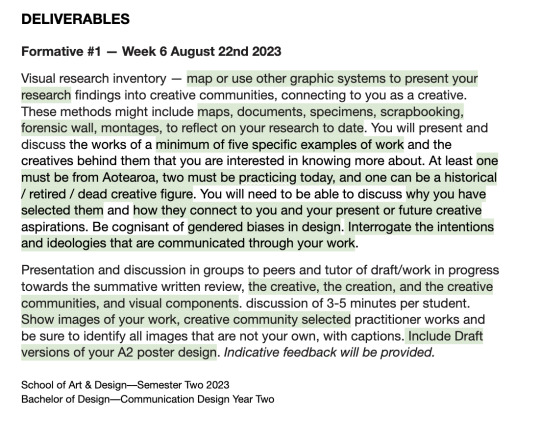Don't wanna be here? Send us removal request.
Text
Week 13 - Final Poster & Reflection
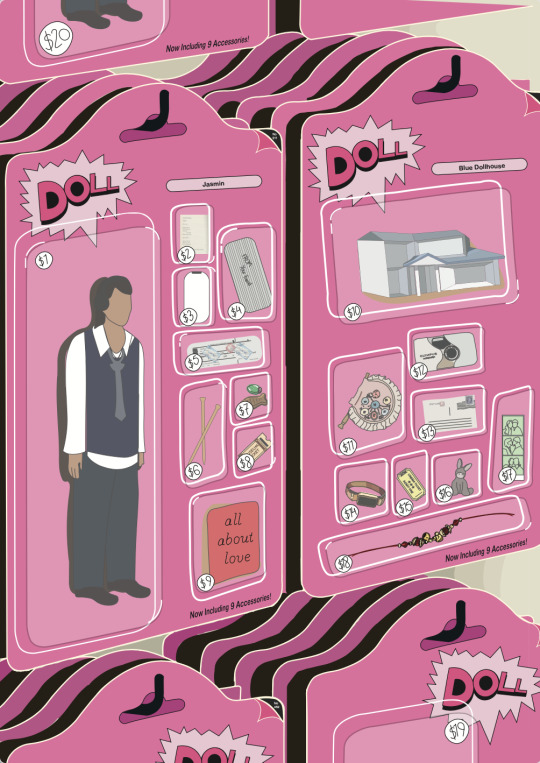

The final week of University and I finally finished the poster! After getting feedback in week 12 I had all the materials I needed to finish. I found this paper really helped me find a deeper meaning within my work and forced me to dig deeper and recognise patterns that I didn't previously. Having the amazing support and feedback from Aakfia and Holly was very helpful and allowed me to be a better designer and writer.
0 notes
Text
Week 12
In-class feedback:
"A brilliant design with well thought out design. Great even down to the small elements with the price tag."
"I love the idea of numbering the elements by the price."
"Love it, if you want to make the writing match the object side maybe more the background that pink colour"
"Cute making number price tags"
What I will do differently based on my feedback:
I was going between the back of the Barbie box or the receipt look but now I have decided on a receipt.
Changing the first 1-9 elements from 00.1 to $1.00
Change the doll title
0 notes
Text
Week 11 Poster Updates


At this point, I have all my elements drawn out and my poster has a clear system (I know where everything is going). The written part of my poster will be a receipt or the back of the doll box, at this point I have not decided.
0 notes
Text
Week 10
Feedback on my critical review:





I got feedback from Aakifa and Holly, I found the feedback very helpful! I got a clearer idea of how to layout the review and found many many grammar mistakes.
0 notes
Text
Week 9 SDL Pt. 2
Reflection on my poster and Unpacking my (then) elements:
Mum’s ring - A ring with my mum's nickname on it. She got it when she was younger and she gave it to me. The ring is very special to me and really symbolises the old Indian style of jewellery that was popular.
Lolly bags - My siblings and cousins grew up walking to the dairy every week to buy lolly bags. The walk was a 30-minute walk and next to my primary school. Many times after school I would find myself at the dairy once again spending the few dollars I had in my coin purse on lollies.
Camera - I like to take pictures of my friends and family with my 35mm camera. The grainy vintage texture and streaks of yellow and red give character to the somewhat boring images. An expensive hobby that I only pursue when I finally remember that I have a camera. This is a hobby that I want to get into more.
Sylvanian Family toy - Toys I always begged my mum to buy me and I finally got them when I was older and didn't want to play with toys anymore.
Bibi wedding fan - My grandma’s (bibi) fan that she made for her wedding was again used at my older sister's wedding earlier this year. The fan is a vintage Indian style handmade and hand embroidered. I've seen this fan my whole life and just recently found out that my bibi made it. She recently passed away and whenever I see the fan I think of the fond memory I have of her telling us siblings how she made it.
Travel tickets and passport - Collecting plane tickets is a memorabilia but also to add to my scrapbook; I'm a collector. Travelling is a huge part of my identity and all the cities I've visited have made me into the person I am now.
Museum tickets - I love museums. It's a good date idea good holiday idea and a good family trip. Spending the day reading plaques and looking at beautiful artefacts from around the world is the best way to spend the day. My favourite museum was the Vatican Museum specifically the Sistine Chapel after studying it in high school I found myself in the same room where Michelangelo was over 500 years ago.
Movie tickets - I love watching films not only for the storylines and aesthetics but for the connectedness, I feel watching with someone, sharing an intimate experience where we are fully encapsulated by this movie and forget about our lives for those 2 hours. One of my chosen creatives; Annie Atkins created props and graphics for Wes Anderson’s Grand Budapest Hotel and the Isle of Dogs.
Photobooth pictures from over the years - My siblings and friends have taken photobooth pictures over the years showing us growing up.
Libbie's handmade flowers - Handmade flowers that my girlfriend made me and one of the first presents they made me. I keep them on my desk alongside photos. My partner is a large part of my identity as a young queer person who didn’t express her sexuality or really come to terms with it; I feel like I can finally be myself with this person and be the person young scared me wanted to be and wish I was in the future.
0 notes
Text
Week 9 SDL
Reflection on my poster and Unpacking my (then) elements:
Rakhi - Rakhi is a Hindu celebration that is celebrated across India by many different groups of people even those who are not Hindu. It is celebrated between a brother and sister; the sister ties a thread on her brother and, in return, gets a token of his love. The thread represents the hope and goal of a long life for the brother. I got this element in the previous year as my family celebrated this tradition every year. We shared the holiday with my cousins. This element is a small part of my culture/ a cultural tradition that we celebrate as my family isn't religious we tend to not celebrate religious holidays except this one. It's important to me because it connects me to my culture a little bit while living in a Western-centred world. The celebration is Hindu and originated from Indian mythology. There are many different versions of the myth that all follow a sacred thread given to men (mostly husbands and brothers). The element is heavily related to family and connection. This is one of my values of community. I want to get more in touch with my culture and incorporate more of myself and my personal values into my design. This element is so rich in history and thus I picked it for my element
Sapphos fragments - Sappho historically is an ancient geek poet from the Greek island of Lesbos. She wrote poems about the struggles of love and many believe much of her poems were about female lovers though we will never fully know in 1073 her work was all burned by Pope Gregory VII as her work was permisuous and she gained a reputation. Her poetry inspired words like lesbian and sapphic and many consider her a lesbian icon. I purchased this book online in hopes of getting more into poetry and learning about the LGBTQ+ community. This element is significant to me as I identify as a part of the LGBTQ+. Learning more about the origins of queer relationships in the past is interesting and shows that queer relationships have always been taboo. I want to incorporate more personal issues and matters in my work. For one of my creatives, I picked an LGBT!+ artist Shannon Novak and his work is all rainbow and loud. All my artist were out there with their work using lots of colours and organised chaos. Sappho's poetry has an element of beauty in her lyric poetry.
Letters from my friends- My friends and I from high school attempted to keep in touch the old-fashioned way post-high school. We all moved to different cities and began writing letters to each other this lasted for longer than I thought and I hold these letters close to my heart. My friends and I had a rotation where we would update each other on relationships, uni, drama, and mental health. This element is significant to me it reminds me of the importance of community and connection. Having a solid support system that you can go to with anything and trust is the best.
Crochet needle and Knitting needles - Knitting and crocheting have recently taken over my life. I find myself crocheting flowers and toys for family and friends. I now identify with everything I create and they hold great value to me. The process is comforting and I find when I'm stressed or want to wind down I crochet. I got my hooks and needles from Spotlight and I got them close to my identity.
Postcard- I love travelling and feel most like myself when my environment is constantly changing and I'm exposed to different cultures, foods and people. A postcard is usually sent to friends and family another huge part of my identity. One of my favourite things to do while I'm travelling is scrapbook in my journal and use postcards from every city to make it more personable and tailor every journal entry to the city.
All About Love book - The origin of this element is I found this book through TikTok and as a self-help book lover I purchased it. But the origins of this book start with the profound inspiration that is Bell Hooks. Originally published in 1999 the novel discussed the different aspects of romantic love in modern. Bell Hooks also known as Gloria Jean Watkins was an American scholar and activist. “Hooks assumed her pseudonym, the name of her great-grandmother, to honour female legacies; she preferred to spell it in all lowercase letters to focus attention on her message rather than herself.”. This element has significance to me because Hooks grew up in a segregated community and still went on to thrive and write about her experiences. Hook's key theme of feminism and racism which is apparent in all her work is something I want to show in my work. I grew up with a huge distaste for my culture and browning up darker than the people around me. At times I cried over the fact that I was the darkest in my family. In most of India, it is common to bleach your skin to be fair and objectively “prettier”. Internalised racism is something I've had to overcome and in many thought patterns, I find that I still hold on to many old ways of thinking because of what is ingrained in me.
Pictures of my family and friends - Photos of family and friends show the people I love most around me. I also love taking characteristics and quirks that people around me do and using and incorporating them into my personality. The people around me really do make me ME.
Phone - As a Gen Z, I'm quite literally attached to my phone. I have a photo of my partner as my screensaver and carry all my most important cards on the back. My phone holds every piece of information that I will ever need. I sleep next to it. I hold it close to me when I'm walking and it sits buzzing next to me in all my uni classes.
Childhood home
Childhood toy
0 notes
Text
Week 8 SDL
3 things you're gonna change in your poster (what retentions have emerged from today's class?)
After receiving feedback from my formative and learning more about the poster in class I want to change the following:
Find more elements that directly relate to my design practices and design thinking. All my elements currently are personal.
Use more conventions in my poster such as composite image.
Implement more elements of UI/UX design in the poster.
0 notes
Text
Week 7: Planning out the poster

Above I share some potential poster ideas. I want to start looking for inspiration early so I can pick my elements accordingly.
I talk about the 2 poster designs:
Poster 1
The first poster follows the same design system as the last image below. I want a straight forward 20 box rule system which would allow for all elements to be equally shown and spread out. I want to still have bright colours and the organised chaos it brings to the poster. I would have the text/50 words for each element on the second half of the page. Each element would be numbered to show the viewer which text belongs to which element.
Poster 2
The second poster draws inspiration from the poster of the head below but instead of a head I would use my childhood home which in itself would be an element. I would put all 20 elements inside the house sort of drawing inspiration from a doll house.
0 notes
Text
Formative Feedback

Feedback from Lecturer
"All your work is completed so far and looks good.
Your blog can be improved through more incorporation of personal insight and your own reflective voice. For example - you have great examples- you have great examples of how the 20 objects might be presented, you could add to this by writing why you chose them, what techniques you may want to use etc"
0 notes
Text
Week 6: Formative Script and Presentation
The creative
Some key themes I want to portray or speak through my work are themes of feminism, environmental impact themes and themes of identity.
I definitely look at movies as research that’s why I picked one of my designer. She’s a prop maker. Rn I want to be an interaction designer so my design practice definitely relates to a moral logical way of thinking
The creation
Suzy chan
Suzy Chan is a designer born in Guangdong, China. She studied at UAL LCC in London and is currently living and working in Germany.
She specialises in poster making, moving images, and videos. She has previously worked on brand expressions.
Her work is very maximalist. It uses bright colours and patterns to convey a message. I want to take her use of bright colours and maximalism and use it in my work
She is originally from Macau a city in china that was once a Portuguese colony. Her design style is highly influenced by traditional Chinese culture her graduation project was on Macau. Her visual style derives from where she comes from.
Shannon Novak
What I love about Novak’s works is the use of colour along with the message behind his work. I also love how his work is consistent and has been in his whole career.
Olek
Their work is based on covering people and objects in crochet creating a plush cozy look. They have previously re-created popular artwork by Banksy and Annie Leibovitz’s 1996 portrait of Keith Haring. Olek’s work is found in New York.
Milton Glaser
Created in 1977 as part of an advertising campaign commissioned by New York State, the iconic I ♥ NY logo was designed to increase tourism and raise the spirits of New Yorkers after the city's fiscal crisis.
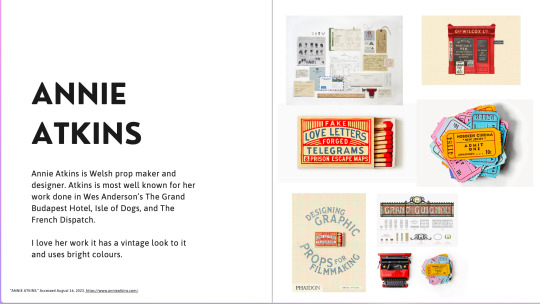

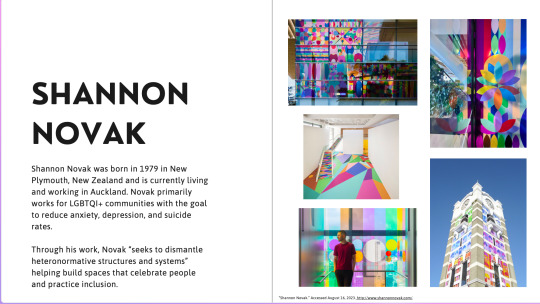
0 notes
Text
Week 5: Material Thinking
What is material thinking?
Material thinking describes the innermost thoughts of a process and why we think the way we do it is innately "within the very process or tissue of making".
Choose one of the creatives from the lecture and describe their material thinking?
The creative I am picking is Cecelia Faumuina. Her work reflects a persons journey living with depression in terms of Pacifika values. Her work 'Manulua' uses graffiti as texture overtop her work. In terms of material thinking Faumuina uses her environment such as patterns and textures she has found outdoors.
How can material thinking be seen through your own work?
Material thinking I use the internet. Where it is finding textures and fonts online.
How would you reference the reading from today?
Bolt, Barbara. “Materializing Pedagogies.” Working Papers in Art & Design, January 2006.
References
Bolt, Barbara. “Materializing Pedagogies.” Working Papers in Art & Design, January 2006.
“‘Manulua’ by Cecelia Faumuina-Khakh — Thecoconet.Tv - The World’s Largest Hub of Pacific Island Content.Uu.” Accessed August 15, 2023. https://www.thecoconet.tv/moana-arts/pacific-short-films/manulua-by-cecelia-faumuina-khakh/.
0 notes
Text
Week 4: SDL
Object Collection



I have started collecting and taking pictures of elements that I can potentially use in the final poster and critical review. Above are plane tickets, my passport, a museum ticket, and a rakhi.
0 notes
Text
Week 4: Collection of Things
Toy Stories: Photos of Children from Around the World and Their Favorite Things
Italian photographer Gabriele Galimberti photographed children all over the world posing with their favourite toys, from Alaska to India to Africa to South America.

I Spy Books by Jean Marzollo
The best-selling I SPY books feature stunning collections of picture riddles with challenging fun for children in kindergarten to third grade

Collection of Things by Jim Golden




Found in Nature by Ruth Rosenthal

“My Things No. 7,” 2004 by Hong Hao

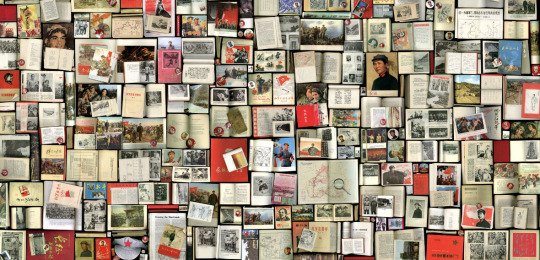
“Back of Paper,” 2013 by Hong Hao
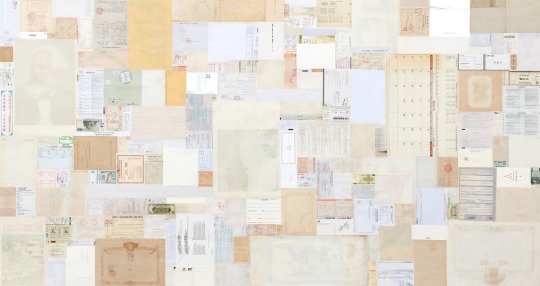
0 notes
Text
SDL: Week 3
Specific techniques and crafts
printmaking
Liu, Y. (2022, 27-29 May 2022). Research on Intelligent Digital Printmaking Printing System based on Viterbi Algorithm. 2022 IEEE 2nd International Conference on Electronic Technology, Communication and Information (ICETCI),
Hudson, Z., Zandt, A., Katz, A., & Graves, W. (2022, 2022/01/02). From Dirca to design: printmaking with leatherwood (Dirca mexicana) bark paper. Journal of Visual Art Practice, 21(1), 1-24. https://doi.org/10.1080/14702029.2021.1981633
ABELL, C. (2015). Printmaking as an Art. Journal of Aesthetics & Art Criticism, 73(1), 23–30. https://doi-org.ezproxy.aut.ac.nz/10.1111/jaac.12137
Mohamed, zahira ibrahim Ibrahim. “Modern Vision for Visual Merging between Printmaking and Mixed (Media ).” Journal of Architecture, Art & Humanistic Science 7, no. 36 (November 1, 2022): 259–82. https://doi.org/10.21608/mjaf.2021.59336.2182.
“Full Article: Printmaking and Cultural Imagination in Contemporary Nigerian Art.” Accessed August 2, 2023. https://www-tandfonline-com.ezproxy.aut.ac.nz/doi/full/10.1080/02560046.2020.1856900.
Key themes, ideas and conversations
Feminism
Resnick, E. (2016). Collaborative Learning. In Developing Citizen Designers (pp. 139–188). New York: Bloomsbury Academic. Retrieved August 1, 2023, from http://dx.doi.org/10.5040/9781474274395-010
France: 1945—2000. (2020). In Margolin, V., Margolin, V. , Houze, R. , & Margolin, S. (Ed.). World History of Design: Europe and North America 1945–2000. London: Bloomsbury Academic. Retrieved August 1, 2023, from http://dx.doi.org/10.5040/9781474246224.045
Marketing/ advertising
David-West, H. (2016). Overview of the State of Graphic Design in Africa. In D. Huppatz (Ed.). Design: Critical and Primary Sources: Development, Globalization, Sustainability (pp. 41–47). London: Bloomsbury Academic. Retrieved August 1, 2023, from http://dx.doi.org/10.5040/9781474282888.0012
Religion
Blount, Taheera N., and Craig C. Brookins. “Adinkra Symbolism, Printmaking, and the Cultural Identity of Ghanaian Emerging Young Adults.” Journal of Creativity in Mental Health 17, no. 3 (July 3, 2022): 374–93. https://doi.org/10.1080/15401383.2021.1911724.
Romanenkova, Julia, Nataliia Zemlianska, and Svitlana Zaria. “Religious Genre in the Contemporary Ukrainian Ex- Libris: Schools, Techniques, Main Characteristics,” no. 13 (2021).
Specialist subject knowledge
Renaissance
Lincoln, Evelyn. “Interactive and Sculptural Printmaking in the Renaissance. Suzanne Karr Schmidt. Brill’s Studies in Intellectual History 270; Brill’s Studies in Art, Art History, and Intellectual History 21. Leiden: Brill, 2018. Xxviii + 440 Pp. $195.” Renaissance Quarterly 73, no. 1 (April 2020): 251–53. https://doi.org/10.1017/rqx.2019.521.
“A Renaissance without Order Ornament, Single-Sheet Engravings, and the Mutability of Architectural Prints on JSTOR.” Accessed August 2, 2023. https://www-jstor-org.ezproxy.aut.ac.nz/stable/10.1525/jsah.2012.71.4.488.
Feminism
Artes, Universidad del País Vasco / Euskal Herriko Unibertsitatea (UPV/EHU) Facultad de Bellas. “AusArt Revista para la investigación en arte.” Text. Universidad del País Vasco / Euskal Herriko Unibertsitatea (UPV/EHU). Argitalpen Zerbitzua / Servicio Editorial, 2013. https://ojs.ehu.eus/index.php/ausart.
Identity
“Full Article: Adinkra Symbolism, Printmaking, and the Cultural Identity of Ghanaian Emerging Young Adults.” Accessed August 2, 2023. https://www-tandfonline-com.ezproxy.aut.ac.nz/doi/full/10.1080/15401383.2021.1911724.
LGBTQ+
“Full Article: In the Making: Queer Publishing and Transpedagogies.” Accessed August 2, 2023. https://www-tandfonline-com.ezproxy.aut.ac.nz/doi/full/10.1080/00043249.2021.1960078.
Creatives working in the environmental, social, cultural, sub-cultural, and political contexts
Environmental
Karim, Maryam, Mehrdad Ghodskhah Daryaei, Javad Torkaman, Reza Oladi, and Mohammad Ali Tajick Ghanbary. “Effect of Environmental Changes (Temprature and Moisture) on Destructive Behaviour of the White Rot Fungus Trametes Versicolor on Chestnut-Leaved Oak.” Iranian Journal of Wood and Paper Industries 9, no. 1 (May 1, 2018): 75–85.
Sub-cultural
Bruton, D. , & Radford, A. (2012). Serious play. In Digital design: A critical introduction (pp. 108–122). London: Bloomsbury Academic. Retrieved August 1, 2023, from http://dx.doi.org/10.5040/9781474294065.ch-007
Political
Eeden, J.V. (2016). Southern African Design. In The Bloomsbury Encyclopedia of Design (pp. 239–243). London: Bloomsbury Academic. Retrieved August 1, 2023, from http://dx.doi.org/10.5040/9781472596154-BED-S085
Social
“Perspectives on Contemporary Printmaking : Critical Writing Since 1986.” Accessed August 2, 2023. https://web-p-ebscohost-com.ezproxy.aut.ac.nz/ehost/ebookviewer/ebook?sid=40e0f963-1764-4bb2-b72b-d0e6c545bd7d%40redis&vid=0&format=EB.
Notable latino artists. (2023). In N. Kanellos, Latino almanac: from early explorers to corporate leaders. Visible Ink Press. Credo Reference: https://networkservices.aut.ac.nz/ezproxy.cgi?url=https://search.credoreference.com/content/entry/viplatino/notable_latino_artists/0?institutionId=5349
0 notes
Text
OBJECTSPACE “POHEWA PĀHEWA” CURATORS


Desna Whaanga-Schollum
Her work connects through the exploration and articulation of cultural identity. Collaborating with a wide variety of communities, businesses, and design professionals, artists and academics to achieve results which affect change in people, practice, and place. Desna actively involves in international indigenous discourse, stakeholder engagement, and Māori Identity design.
Tyrone Ohia
Tyrone Ohia (Ngāti Pukenga, Ngāi te Rangi) is the Creative Director and Founder of Extended Whānau in Auckland.


Graham Tipene
Graham Tipene is a Tā Moko artist who has been involved as a consultant and key artist on civic and Council-led projects throughout Tāmaki Makaurau Auckland. His public work brings Māori kaupapa into the built environment of the city, with major projects including the Waterview tunnel, Victoria Park, Auckland Library, and Tirohanga Whānui Bridge in Albany.


Johnson Witehira
Johnson is an artist, designer and researcher of Māori and Pākehā (British descent). He’s been on a journey into Māori art and design since completing my Masters in Graphic Design (2007) and then my Doctorate in Māori visual arts (2013). Spending most of my time thinking about how Māori, did things in the past, and how they might apply our mātauranga (knowledge) to contemporary problems. His thoughts and writings on Māori design have been published in some of the worlds leading academic journals and books including; Visible Language (University of Cincinnati), The Graphic Design Reader (Bloomsbury), AIGA Eye on Design (US), Novum (Munich) and Monocle (London).


Zoe Black
Zoe Black is the deputy director of Objectspace in Auckland, Aotearoa New Zealand. She has been working in galleries for the past eight years. Her curatorial practice has focused on community development and advocating for critically under-represented craft and object art forms. She is Norwegian Crafts' curator in residence (2020–2022), working on projects that create a dialogue between Indigenous making practices in Aotearoa and Sápmi. Zoe Black was co-editor of the third issue of The Vessel titled Embodied Knowledge.
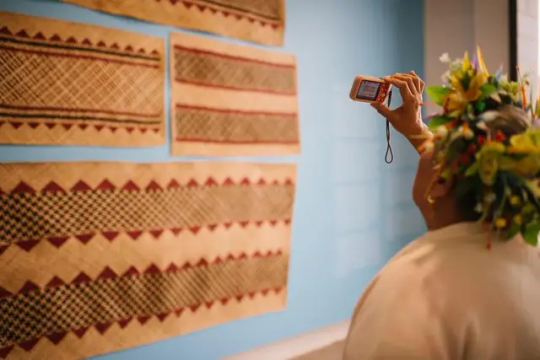

0 notes
Text
Week 2: SDL

This weeks SDL task was to find 10 Aotearoa based designers.
0 notes
